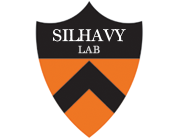Open reading frame expression vectors: a general method for antigen production in Escherichia coli using protein fusions to beta-galactosidase
Type
We have developed an Escherichia coli plasmid vector for the identification and expression of foreign DNA segments that are open reading frames (ORFs). The 5' end of ompF, an E. coli gene encoding an abundant outer membrane protein, is used to provide a strong, regulated promoter, translation initiation site, and signal sequence for export from the cytoplasm. This sequence is coupled to the lacZ gene of E. coli so that expression of beta-galactosidase requires ompF transcription and translation signals. However, this hybrid gene is LacZ- because lacZ is out of frame with respect to ompF. Restriction enzyme recognition sites are located between ompF and lacZ to allow convenient insertion of DNA fragments. If an insert is an ORF of the correct length, ompF and lacZ become realigned in frame, resulting in a LacZ+ gene that produces a tribrid protein with the translation product of the insert sandwiched between OmpF and beta-galactosidase. The LacZ+ phenotype thus identifies clones containing an expressed ORF. To demonstrate the vector's utility we inserted a fragment from the herpes virus thymidine kinase gene and used the resulting tribrid protein to raise antibodies that precipitate thymidine kinase from herpes virus-infected cells. We also inserted a fragment from the E. coli lexA gene to produce a tribrid protein that is precipitated by antiserum raised with LexA protein. Thus, tribrid fusion proteins can be used to produce or detect antibodies and also to identify the product of a cloned gene.

